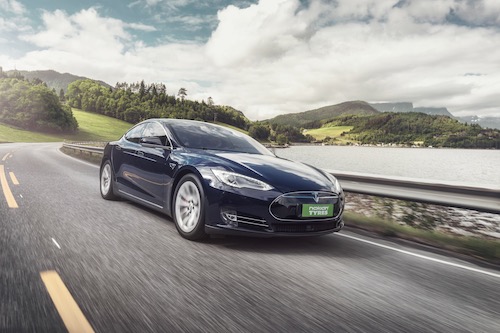
It is good to understand what aquaplaning is and what causes it. Aquaplaning happens when there is water on the road surface and the tyres are not able to remove the water effectively resulting in the tyre being pushed on top of the water layer and therefore losing the contact with the road. This is the same phenomenon as when you reach that state with a boat and you glide on top of the water surface. With the tyres gliding on top of the water, you have basically no ability to steer or control the car.
As this can be a very dangerous occurrence, tyre manufacturers have put a lot of research and development into improving the tyres ability to prevent this phenomenon from occurring or at least limiting the possibility and thus making the summer tyres safer. For winter tyres you have to be able to cope with slushplaning, which is similar but occurs when you have very wet slush of snow and water. For all-weather tyres, they will need to have to cope with both aqua- and slushplaning.
If you experience aquaplaning while driving, you will need to check your tyres. The main problem always tends to be that your summer tyres are worn out or of low quality that don’t have good properties for preventing aquaplaning. There has been a lot of tyre technologies introduced to improve their ability to prevent aquaplaning, so as long as the tread depth is above 4mm the tyres should be able to remove the water to prevent it from happening. However, if you are driving at a very high speed it becomes increasingly difficult to prevent it. When you purchase summer or all-weather tyres for the warm season, you will need to make sure that they have good ability to prevent it.
If you have tyres that are good at preventing aquaplaning and you make sure that you have the correct tyre pressure and that the tread depth is more than 4 mm, then if you are driving at a speed that is adapted to the circumstances, your chance of experiencing aquaplaning should be very limited. It is also important to check that all four tyres are in good conditions, so that you don’t only check one tyre. In addition to the tyre quality, the speed is of utter importance, as the faster you drive, the faster the water has to be pushed away.
Most improvements for the tyres are targeted at improving the speed that the water can be removed through different channels in the tread and its ability to store water. The storage of water allows the water to remain the in the tread and this is highly dependent on the tread depth. The speed improvements have been done through improving the flow to the sides through polished grooves and grove design. These improvements versus a tyre that has not implemented a lot of these, will be significantly worse in these conditions.
For more information on selecting tyres that are good at preventing aquaplaning, visit: www.nokiantyres.com